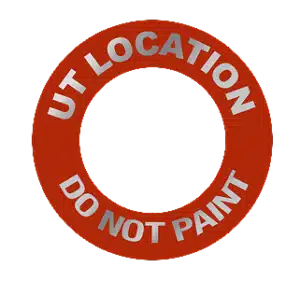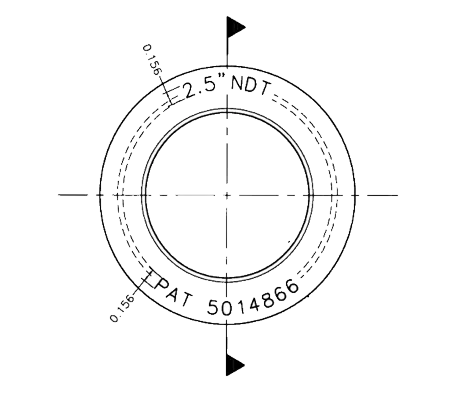Standards + Specs
Interpass temperature is the temperature of the material in the weld area between successive welding passes. When you’re welding, especially for thick materials or complex joints, you often have to make multiple passes with the welding torch to build up the weld to the required thickness.
Between these passes, the metal needs to cool down to a certain temperature before the next pass is made.
Why is Interpass Temperature Important?
- Preventing Cracks: If the interpass temperature is too low, the metal can cool down too quickly, which might lead to cracks in the weld.
- Controlling Metallurgical Properties: Different metals behave differently at various temperatures. Keeping the interpass temperature within a specified range helps ensure that the final weld has the desired strength, ductility, and toughness.
- Avoiding Overheating: If the interpass temperature is too high, it can lead to overheating, which might change the structure of the metal in a way that makes it weaker.
How is Interpass Temperature Controlled?
- Monitoring with Thermometers: Welders use thermometers, thermocouples, or infrared cameras to measure the temperature of the metal between passes.
- Cooling Techniques: If the metal is too hot, welders might use fans or other cooling methods to bring the temperature down to the desired range.
- Heating Techniques: If the metal is too cool, they might use heaters or torches to warm it up to the right temperature.
#welds #Interpass #materials
Testing + Inspection
Risk-Based Inspection (RBI) is used to prioritize inspection resources on the equipment that poses the highest risk, rather than using a one-size-fits-all approach. This helps determine where to focus to ensure safety and reliability, while also reducing costs:
Data Collection: This involves gathering all necessary information about the equipment, its history, operating conditions, materials, construction details, previous inspection results, and any other relevant data.
Risk Assessment: Here, the risk associated with each equipment item is determined. Risk is typically calculated as the product of the probability of failure (PoF) and the consequence of failure (CoF):
Probability of Failure (PoF): This assesses the likelihood that an equipment item will fail. It takes into account factors such as corrosion rates, material susceptibility to damage mechanisms, age, previous inspection results, and operating conditions.
Consequence of Failure (CoF): This evaluates the potential impact of an equipment failure. It considers factors such as potential harm to personnel, environmental impact, business loss, and repair or replacement costs.
Determine Inspection Strategies: Based on the risk assessment, appropriate inspection strategies are chosen. Equipment with higher risks might require more frequent or detailed inspections, while those with lower risks might have extended inspection intervals.
Implement Inspection Plans: Once the strategies are determined, they are put into action. This could involve non-destructive testing (NDT) techniques, visual inspections, or other methods to evaluate the integrity of the equipment.
Review and Update: After inspections are carried out, the data is reviewed, and the risk assessment is updated. If new damage mechanisms are discovered or operating conditions change, the risk assessments and inspection plans should be adjusted accordingly.
Documentation: All steps, findings, recommendations, and implemented actions are documented for future reference and audits.
Risk = Probability of Failure (PoF) × Consequence of Failure (CoF)
The fundamental concept of RBI is that the inspection frequency and type should be based
on the risk each equipment item poses to the facility.
Testing + Inspection
Liquid Penetrant Testing (PT), also known as Dye Penetrant Inspection (DPI) or Fluorescent Penetrant Inspection (FPI), is a widely used nondestructive testing (NDT) method. It is used to detect surface-breaking defects in non-porous materials, such as metals, plastics, or ceramics. This method is straightforward, cost-effective, and can be used on large areas and complex shapes.
Following is a Step-by-step process of how Liquid Penetrant Testing is conducted:
1. Surface Preparation:
• Clean the Surface: The test surface must be clean and free of any contaminants like oil, grease, dust, or paint. Contaminants can prevent the penetrant from entering defects.
• Dry the Surface: Ensure the surface is dry before applying the penetrant.
2. Application of Penetrant:
• Apply the Penetrant: A liquid penetrant is applied to the surface of the test material. This penetrant is usually a bright color (visible dye) or fluorescent (under UV light).
• Dwell Time: Allow the penetrant to soak into any surface-breaking defects. The dwell time depends on the material and defect size, typically ranging from a few minutes to half an hour.
3. Excess Penetrant Removal:
• Remove Excess Penetrant: After the dwell time, the excess penetrant on the surface is removed carefully. For visible dye penetrants, this is often done with a clean, lint-free cloth and a solvent. For fluorescent penetrants, water or an emulsifier might be used.
• Ensure Clean Surface: Ensure that the surface is clean and only the penetrant in the defects remains.
4. Application of Developer:
• Apply Developer: A developer is applied to draw the penetrant out of the defects and onto the surface, creating a visible indication. Developers come in various forms: dry powder, wet aqueous, or non-aqueous (solvent-based).
• Development Time: Allow the developer to dry and give time for the penetrant to bleed out from defects, making them visible.
5. Inspection:
• Inspect the Surface: Examine the surface under appropriate lighting. For visible dye penetrants, this is normal light. For fluorescent penetrants, UV light is used.
• Identify Defects: Look for indications of defects. They will appear as bright lines or spots where the penetrant has been drawn out by the developer.
6. Post-Cleaning:
• Clean the Surface: After inspection, clean the part to remove all residues of penetrant and developer, especially if the part will be put into service.
Advantages of Liquid Penetrant Testing:
• Versatility: Can be used on a wide variety of non-porous materials.
• Sensitivity: Effective in detecting small surface-breaking defects.
• Simplicity: The method is straightforward and doesn’t require complex equipment.
• Cost-Effective: Relatively low cost compared to other NDT methods.
Limitations:
• Surface Breaking Only: Can only detect defects open to the surface.
• Surface Preparation Required: The surface must be thoroughly cleaned, which can be time-consuming.
• Material Limitations: Not suitable for porous materials, as the penetrant would seep into the material itself.
• Environmental Concerns: Some penetrants and developers might be hazardous or require special disposal methods.
Testing + Inspection
Laser Profilometry (LAS) is a technique used to measure the surface profile or shape of an object with high precision. Let’s break down the key points to understand it better:
Imagine you have a surface, like a piece of metal, and you want to know every tiny bump and groove on it. Laser Profilometry uses a laser beam to scan the surface and create a detailed map of its features.
How Does It Work?
- Laser Beam: A laser beam is directed at the surface of the object.
- Reflection: The laser light reflects off the surface and is captured by a sensor.
- Measurement: The sensor measures the distance between the laser source and the surface at multiple points.
- Data Collection: These measurements are collected and processed to create a 3D image or profile of the surface.
Why Use Laser Profilometry?
- Precision: It can detect very small surface features, much smaller than what you could see with the naked eye.
- Non-contact: Since it uses light, it doesn’t physically touch the object, which is important for delicate or soft materials.
- Speed: It can quickly scan large areas compared to some other methods.
Where is it Used?
- Manufacturing: To ensure that parts are made correctly with the right dimensions.
- Quality Control: To check for defects or irregularities on surfaces.
- Research and Development: For studying the surface properties of new materials.
Visualizing Laser Profilometry
Think of it like shining a flashlight on a bumpy wall. As the light moves across the wall, it highlights all the dips and peaks.
Now imagine if you could record exactly how high each bump is and how deep each dip goes. That’s similar to what Laser Profilometry does, but with much greater precision.
#laser



